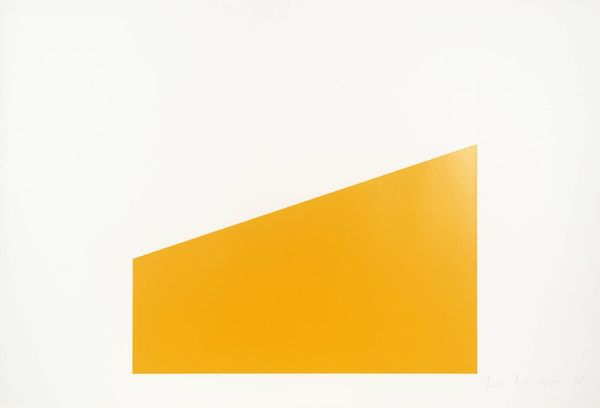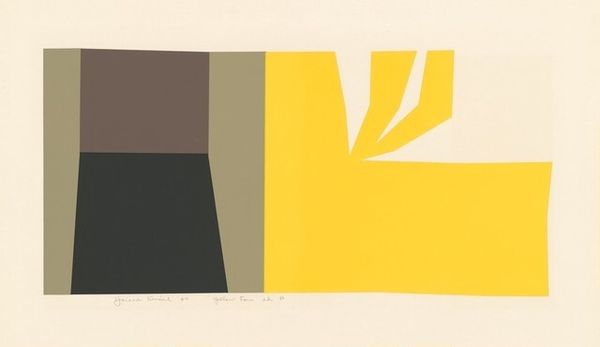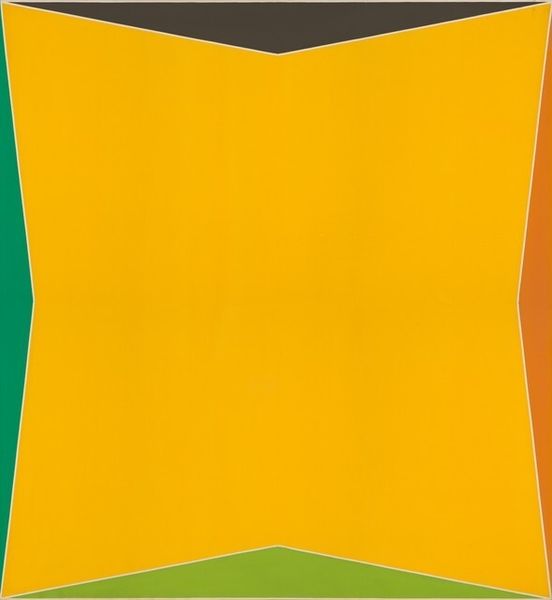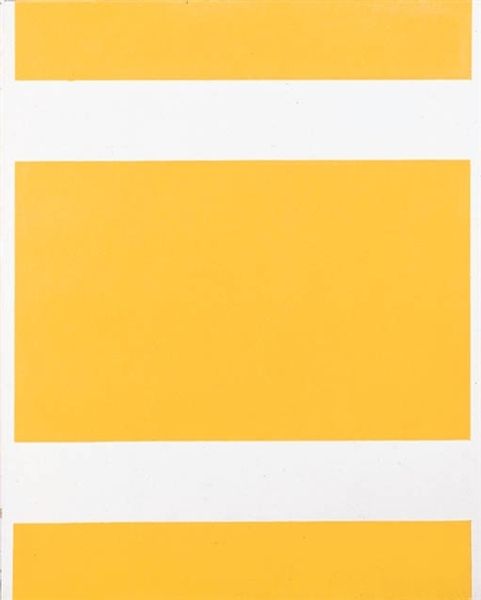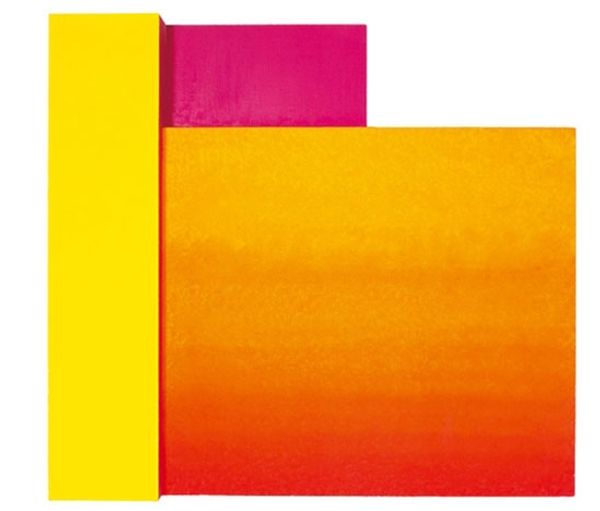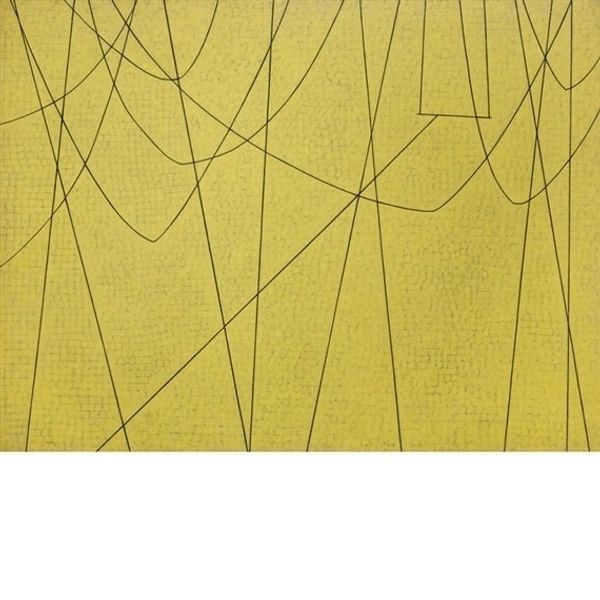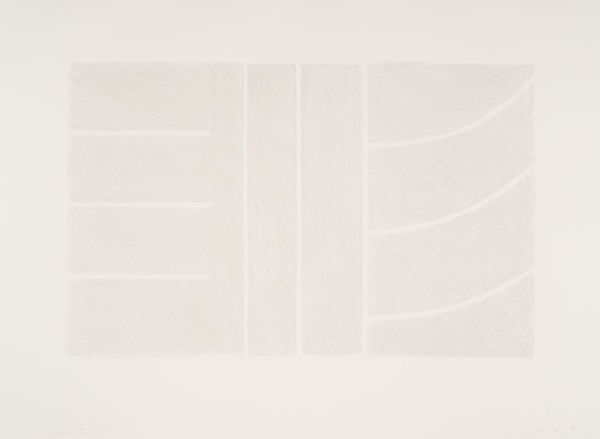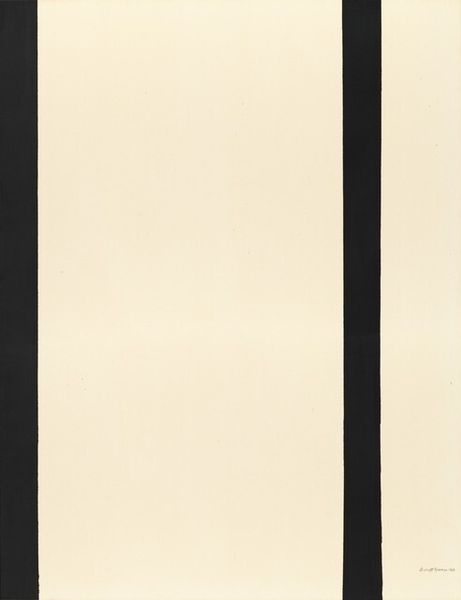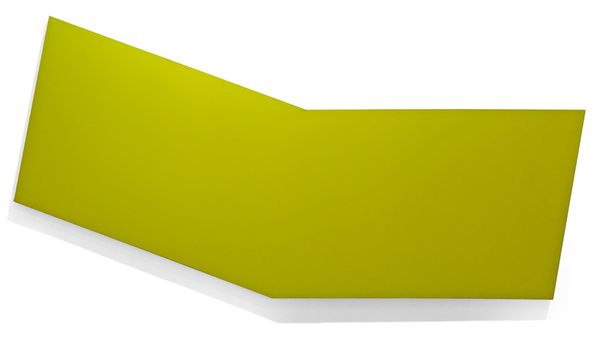
Copyright: Nassos Daphnis,Fair Use
Curator: The clean, geometric lines of this piece immediately draw the eye. There's something almost optimistic about the limited palette. Editor: We're looking at "SS 4-78" by Nassos Daphnis, an acrylic on canvas triptych created in 1978. The three panels together create a minimalist exploration of form and color. Tell me more about why it evokes optimism for you. Curator: The strong yellow and gentle gray arcs against the creamy white, the almost mathematical precision. It seems to me the choice of color speaks to that optimism of post-war Modernism and a forward-looking societal project. There’s a faith in progress, almost a utopian sentiment there. I also appreciate how it nods toward Op and Pop art simultaneously. The sleekness highlights how clean lines influenced design, blurring distinctions of gendered crafts. Editor: Interesting point about societal faith being embodied here. Considering its material execution and Daphnis’ background as a scientist and then abstract expressionist painter, it's also easy to see connections to industrial processes, perhaps reflecting consumer culture. Daphnis wasn't just slinging paint; he also explored printmaking and sculpture, experimenting across diverse modes of material production and pushing limits, something that really ties into labor relations post-war. Curator: Indeed. I think the triptych form is important, too. Though abstract, the division into three sections recalls altarpieces, transforming abstraction into something quasi-spiritual, something worth venerating. And that sleek surface? Acrylics were becoming ubiquitous at this moment. You've got a very intentional move away from the traditional oil paint of old masters, toward synthetic colors born out of specific socio-economic and technological conditions. Editor: Absolutely. And consider Daphnis’ embrace of hard-edge painting, a very determined move away from gestural, messy abstraction. This work and movement embraced clean manufactured forms and sharp color juxtapositions. The smooth application of the acrylic, lacking brushstrokes or any trace of the artist’s hand, feels significant here. I believe there's a dialogue here between art history and contemporaneity which also touches questions about social responsibility toward industrial manufacture and environmental consciousness as society modernizes. Curator: This really encapsulates how abstraction reflects and refracts societal shifts, revealing embedded ideologies even within seemingly non-representational forms. The way geometric abstraction engaged with space challenges any art’s supposedly purely aesthetic value, while offering potent reflections on a time’s aesthetic politics. Editor: Agreed. The work makes us ponder abstraction’s place within broader dialogues of materiality, and its continued influence across disciplines to this day.
Comments
No comments
Be the first to comment and join the conversation on the ultimate creative platform.
